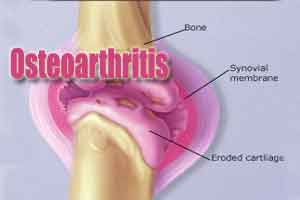- Home
- Editorial
- News
- Practice Guidelines
- Anesthesiology Guidelines
- Cancer Guidelines
- Cardiac Sciences Guidelines
- Critical Care Guidelines
- Dentistry Guidelines
- Dermatology Guidelines
- Diabetes and Endo Guidelines
- Diagnostics Guidelines
- ENT Guidelines
- Featured Practice Guidelines
- Gastroenterology Guidelines
- Geriatrics Guidelines
- Medicine Guidelines
- Nephrology Guidelines
- Neurosciences Guidelines
- Obs and Gynae Guidelines
- Ophthalmology Guidelines
- Orthopaedics Guidelines
- Paediatrics Guidelines
- Psychiatry Guidelines
- Pulmonology Guidelines
- Radiology Guidelines
- Surgery Guidelines
- Urology Guidelines
Osteoarthritis drug of past could help treat opioid addiction

Researchers at Linda and Jack Gill Center for Biomolecular Science at IU Bloomington in a new study have discovered that a drug previously tested to treat osteoarthritis appears to block neuropathic pain and decrease signs of opioid dependence.It has been proved safe when used in combination with opioid-based pain medications.The relevant research work is reported in the journal Molecular Pharmacology.
The need for non-addictive alternatives to opioid-based pain medication is urgent due to the rapid rise in overdose deaths over the past decade. According to the Centers for Disease Control and Prevention, over 64,000 Americans died from drug overdoses in 2016, including from illicit drugs and prescription opioids. To tackle this issue, IU last year launched the Responding to the Addictions Crisis Grand Challenge initiative to invest $50 million to prevent and reduce addictions in Indian
"The potential to quickly begin using this compound in combination with opioid-based medication to treat pain and reduce addiction makes this discovery very significant," said lead investigator Andrea G. Hohmann, a Linda and Jack Gill Chair of Neuroscience and professor in the IU Bloomington College of Arts and Sciences' Department of Psychological and Brain Sciences. "We already know this drug is safe for use in people, so moving into human trials will not require as many regulatory hurdles."
To test the potential of the experimental drug to treat pain and reduce addiction symptoms, IU scientists administered the compound and the opioid morphine to male mice with neuropathic pain. While morphine initially reduced the pain, mice quickly developed tolerance to morphine's effectiveness, similar to people who require higher doses of opioid over time to achieve relief.
However, when a low dose of the experimental drug was combined with morphine, the mice no longer became tolerant to morphine, and that lack of tolerance remained even after the experimental drug was discontinued. The researchers also found the experimental drug could produce sustained pain relief on its own at higher doses.
In another experiment, mice were given either morphine alone or morphine in combination with the experimental drug, and then treated with naloxone, which blocks the effect of opioids and induces opioid withdrawal symptoms. Remarkably, Hohmann said, the experimental drug also decreased the severity of these symptoms.
Together, these results suggest the experimental drug could be used in combination with opioids to prevent tolerance, allowing satisfactory pain treatment with fewer side effects, or as a means to wean opioid-tolerant individuals off these drugs.
The researchers chose to explore the failed osteoarthritis drug because they had found that the compound acted in a unique way upon a target in the body known to play a role in pain relief.

Disclaimer: This site is primarily intended for healthcare professionals. Any content/information on this website does not replace the advice of medical and/or health professionals and should not be construed as medical/diagnostic advice/endorsement or prescription. Use of this site is subject to our terms of use, privacy policy, advertisement policy. © 2020 Minerva Medical Treatment Pvt Ltd